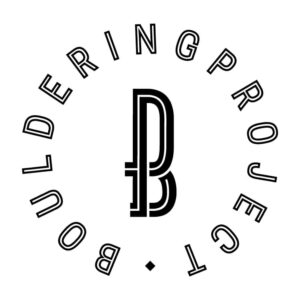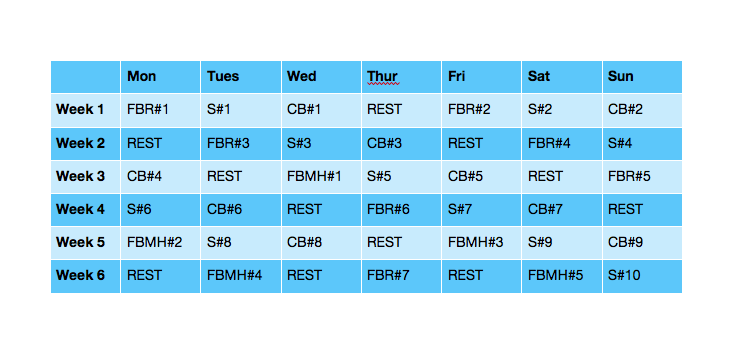If you have a hangboard and a set of rings, you’re ready to take your rock climbing to the next level!
Created in partnership with the Bouldering Project

Well before the pandemic started Uphill Athlete’s Josh Wharton and Steve House spent months working on an extensive series of training plans in partnership with the training staff of the Bouldering Project climbing gyms. The Bouldering Project are currently in Seattle, Austin, and Minneapolis, with more locations in the works. We were due to launch training plans to Bouldering Project and Uphill Athlete members, right about now. Well, the gyms are closed, but the content is still here. So we’ve worked to convert some of the basics, particularly the hangboarding, into a stay-at-home format. Here it is. We hope you enjoy it.
Read more: Training for Rock Climbing
The full training resources include 72 weeks of training plans for bouldering and route-climbing supported by 100 professionally shot and edited videos covering everything from how to campus to mobility work to strength work. These are available exclusively as part of our Uphill Athlete Memberships
Training for Rock Climbing. This FREE plan is designed for those of you staying at home without access to a climbing gym or exercise equipment beyond a simple TRX/Rings set up. This simple-to-follow training plan doesn’t require a large time investment. It should help you maintain, or improve, upper body, finger, and core strength. It’s also something you can return to in the future when taken away from climbing by work, travel, or a lower body injury. If you’re new to climbing specific training, and complete this plan, you may emerge from quarantine feeling better on the rock than ever before!
Required Equipment: Fingerboard, TRX or rings, small notebook, scale, climbing harness or dip belt, and homemade weights. Note: if you don’t have a fingerboard, you can likely add a few screws to reinforce your door casing, and use the top of the door frame as an edge for hanging. You can create makeshift weights using water bottles, rocks in shopping bags, backpacks with books, etc. Label them, making it simple to quantify the appropriate weight during workouts. A quart of water is approximately 2 pounds. A liter of water is 1kg.
A Note on Fingerboards: There are many fingerboards on the market. My favorites are the Tension Grindstone Mk2, Beastmaker 1000 and 2000, and the Rock Prodigy Forge, due to their simple, non-injurious, designs. The wood options are particularly nice since wood tends to be less conditions dependent, and easier on the skin than plastic. If you don’t have a place to screw in a board, then a few good options are the Light Rail by Metolius, and The Block (get two) or Flash Board by Tension.
A note on additional exercise: We highly recommend adding aerobic exercise, mobility work, stretching, and recovery (such as foam rolling) to this plan as time allows. However be mindful not to let this additional work interfere with the quality of your workouts. For instance don’t do a huge run on your “rest” day, or a long session of static stretching just before a workout, and expect quality results.
Read More: Benefits of Rock Climbing Explained
Plan Structure
Below is an overview of the plan. Each cell represents a day of the week and contains the workout designated for that day. Detailed descriptions of each activity are given below. Keep in mind, you can start on any day of the week, but start with FBR#1 (Finger Board Repeaters #1) and follow the plan from there.
Key
FBR = Finger Board Repeaters
S = Strength
CB = Core Blast
FBMH = Finger Board Max Hangs

The Workouts
Fingerboard Repeaters (FBR)
Choose five holds on your fingerboard. If you are working with only an edge simply choose five different grip types such as four finger open, four finger half crimp, four finger full crimp, back three fingers open, and middle two fingers open. Choose the five holds wisely, as you will return to these holds during your Fingerboard Max Hang workouts, and during future training cycles. If your post quarantine goal route, or climbing trip involves mostly pockets, crimps, or pinches you should give special emphasis to that grip type. For instance if my goal trip was to Ten Sleep, Wyoming, I would choose two pocket grips, and no pinch. While if I was going tufa climbing in Spain, I would choose two pinch varieties, and no pocket.
A quality grip selection that covers the full spectrum includes:
Open hand two pad edge
Medium pinch
Half crimp one pad edge
Middle two fingers two pad pocket
Open hand sloper
*Take note that the harder grips come midway through the workout to ensure that you are sufficiently warmed up.
Logbook: Keep track of the date, workout number, your weight, room temperature, the amount of weight you add or subtract from your body weight, and the length of each hang. This is critical, not just for this training cycle, but also for future cycles, as you seek to create baselines for finger strength, and create a clear path to improvement.
- Here is our Recruitment Fingerboarding Log as a PDF.
Warm up: 5 minutes of light aerobics exercise (spin on a stationary bike, jump rope, take a quick walk, etc), and then 10 to 15 minutes of easy hangs.
The Workout: With good form (engaged shoulders, elbows slightly bent), using an open hand grip, start with the largest of your five grips and hang from those holds, with both arms, for 7 seconds, release 3 seconds, repeat 7 times on the first grip. Rest 3 minutes. On the next set, use the same grip, adding 5 pounds. When you start the third set, add an additional 5 pounds.
Move onto the next grip and repeat 7 seconds on, 3 seconds off, for 7 reps. Rest 3 minutes, for three sets, and continue on through all grip positions in the same way. To be clear, one set: 7” (seven seconds) hang 3” (three seconds) rest x 7 reps with 3’ (three minutes) rest before the next set, after which you will increase the weight by 5 pounds for the next set. In summary: Do three sets of seven reps on each grip, adding 5 pounds to each successive set. Once you cycle through the five grips, you are done.
Another way to describe this workout is that each set, on a given grip, will look like this:
On the first set, do 6 reps of 7 seconds on, 3 seconds off, followed by 3’ rest.
On the second set add 5 pounds, and do 6 reps of 7 seconds on, 3 seconds off, followed by 3’ rest.
On the third set add another 5 pounds, and do 5 reps of 7 seconds on, 3 seconds off, followed by 3 minutes rest.
It will take a workout or two to get the weights right. On some holds you will likely need to take weight off using a harness and pulley system. On some holds you will likely need to add weight by clipping weight onto your harness. With the correct weight the first set should feel relatively easy, and the last set should feel like a battle with failure on the 3rd or 4th rep.
If you cannot hang with full body weight on some of the grips and do not have a pulley set up or exercise band to reduce your weight, perform this protocol with your feet on the ground and slightly decrease the weight on your feet from set to set and workout to workout. Keep in mind, however, that this will make tracking your progression a little more difficult because you will have to rely on your perceived effort rather than more objective measurements that weights provide.
When you complete 3 sets of 7 reps successively on a particular grip, add 5 pounds to that grip on each set during the next workout.
Be careful on pockets. They can be injurious. My preference is to do two finger hangs from a one, two, or three pad edge rather than from actual pockets, to limit the possibility of injury.
Example Finger Board Repeaters Workout
Open hand two pad edge
Set 1: Body weight only, 7” hang 3” rest x 7 reps
Rest 3’
Set 2: Body weight +5 pounds 7” hang 3” rest x 5 reps (failed to complete 6th rep)
Rest 3’
Set 3: Body weight +10 pounds 7” hang 3” rest x 3 reps (failed to complete 4th rep)
Rest 3’
Medium pinch
Set 1: Body weight -10 pounds, 7” hang 3” rest x 7 reps
Rest 3’
Set 2: Body weight -5 pounds, 7” hang 3” rest x 6 reps (failed to complete 7th rep)
Rest 3’
Set 3: Body weight only, 7” hang 3” rest x 5 reps (failed to complete 6th rep)
Rest 3’
Half crimp one pad edge
Set 1: Body weight -25 pounds, 7” hang 3” rest x 7 reps
Rest 3’
Set 2: Body weight -20 pounds, 7” hang 3” rest x 7 reps
Rest 3’
Set 3: Body weight, -15 pounds 7” hang 3” rest x 4 reps (failed to complete 4th rep)
Rest 3’
Middle two fingers two pad pocket
Set 1: Body weight -45 pounds, 7” hang 3” rest x 7 reps
Rest 3’
Set 2: Body weight -40 pounds, 7” hang 3” rest x 6 reps (failed to complete 7th rep)
Rest 3’
Set 3: Body weight, -35 pounds 7” hang 3” rest x 6 reps (failed to complete 7th rep)
Rest 3’
Open hand sloper
Set 1: Body weight -55 pounds, 7” hang 3” rest x 7 reps
Rest 3’
Set 2: Body weight -50 pounds, 7” hang 3” rest x 5 reps (failed to complete 6th rep)
Rest 3’
Set 3: Body weight, -45 pounds 7” hang 3” rest x 4 reps (failed to complete 5th rep)
When to Increase Weight?
For the example above, take note that you will only increase weight when you are able to complete all seven reps at each weight. Once this is done increase all of the weights by 5 pounds.
So for instance: If your Open hand two pad edge hangs look like this for workout #1 (FBR#1):
Open hand two pad edge
Set 1: Body weight only, 7” hang 3” rest x 7 reps
Rest 3’
Set 2: Body weight +5 pounds 7” hang 3” rest x 7 reps
Rest 3’
Set 3: Body weight +10 pounds 7” hang 3” rest x 7 reps
Rest 3’
Then, the next Finger Board Repeaters workout (FBR#2) you will increase the weights by 5 pounds and your reps may look something like this:
Open hand two pad edge
Set 1: Body weight +5 pounds, 7” hang 3” rest x 7 reps
Rest 3’
Set 2: Body weight +10 pounds 7” hang 3” rest x 6 reps (failed to complete 7th rep)
Rest 3’
Set 3: Body weight +15 pounds 7” hang 3” rest x 3 reps (failed to complete 4th rep)
Rest 3’
To be clear: Once you are able to perform +5; +10; and +15 pounds for seven reps then increase all of the sets again by 5 pounds, to +10; +15; +20 pounds.
It is not uncommon for it to take multiple workouts to move up by 5 pounds.
This training strategy is commonly referred to as Progressive Overload.
Fingerboard Max Hangs (FBMH)
Logbook: Keep track of the date, workout number, your weight, room temperature, the amount of weight you add or subtract from your body weight, and the length of each hang. This is critical, not just for this training cycle, but also for future training cycles, as you seek to create baselines for strength and fitness, and create a clear path to improvement. The Rock Prodigy Training logbook has an excellent form for this exact purpose.
- Here is Josh’s Fingerboard Max Hangs Workout as a PDF for you to print out at home.
Warm up: 5 minutes of light aerobics exercise (spin on a stationary bike, jump rope, take a quick walk, etc), and then 10 to 15 minutes of easy hangs.
The Workout: Using the same holds, or grip positions, from your fingerboard repeater workouts complete three sets of six second (6” = six seconds) hangs on each hold, or grip position, separated by two minute rests (2’ = two minutes). Below is an example workout, but the grips will obviously be specific to what you chose at the beginning of the training cycle. The weights I give below are merely suggestions, and it will likely take several workouts for you to find the right weight for you. The first hang should feel relatively easy, and you should barely complete, or fail, on the final hang. Many climbers will likely need to subtract weight by wearing a harness and using a pulley system for certain holds. If you don’t have a pulley system, keep your feet on the ground, or a stool, while focusing on pulling as much of your body weight off the ground as possible.
2 -arm hang big pinch (I like the one on the Rock Prodigy board)
Hang 6” +0lbs, rest 2’
Hang 6” +10lbs rest 2’
Hang 6” +20lbs rest 2’
2-arm hang 1 pad edge (I like the lowest outside hold on a Beastmaker 2000.)
Hang 6” +0lbs, rest 2’
Hang 6” +10lbs rest 2’
Hang 6” +20lbs rest 2’
2-arm hang 1 pad edge half crimp (I like the lowest outside hold on a Beastmaker 2000.)
Hang 6” +0lbs, rest 2’
Hang 6” +10lbs rest 2’
Hang 6” +20lbs rest 2’
2-arm hang deep two finger pocket (Proceed carefully on these, pockets can be injurious.)
Hang 6” +0lbs, rest 2’
Hang 10” +10lbs rest 2’
Hang 10” +20lbs rest 2’
2-arm hang Sloper (I like the Rock Prodigy sloper.)
Hang 6” +0lbs, rest 2’
Hang 6” +10lbs, rest 2’
Hang 6” +20lbs
If you reach 6” in your final set on a particular grip, in the next workout add 5lbs to that hang. So, given the workout described above, the progression for each grip would be +5lbs, +15lbs, + 25lbs. Continue this progression throughout the workout cycle. Meaning that if you do a four workout cycle, starting with the above weights, by the final workout, the weights would be +20lbs, +30lbs, +40lbs for each grip.
Strength Workouts
Logbook: Keep track of the date, workout number, number or reps completed in each set, and, when applicable, the amount of weight you add to your body weight.
Warm up: 5 minutes of light aerobics exercise (spin on a stationary bike, jump rope, take a quick walk, etc)
The workout: Strive for quality, controlled movement. A breakdown in form constitutes failure. Use the benchmarks from your previous workout to motivate you to progress with each session.
TRX, or Ring Pull-ups: Complete 5 sets, of 5 pull-ups, on 5 minute rests. If you complete the 5 sets successfully add 5lbs to this exercise during your next workout. Video Tutorial.
Offset TRX, or Ring, Pull ups: Complete 4 sets, of 3 offset pull-ups, on 3 minute rests, alternating which arm is highest with each set. Begin with your hands offset by approximately 3 inches. If you complete all sets successfully, offset your hands by an additional 3 inches during your next workout. (A daisy chain, or cord with knots tied in it is a simple way to make these adjustments over time.) Video Tutorial.
TRX rows: In a near horizontal position complete 3 sets, of 8 rows. If you complete the 3 sets successfully add an additional rep during your next workout. Video Tutorial.
TRX push ups: Complete 3 sets of 8 push-ups, on 3 minute rests. If you complete the 3 sets successfully add an additional rep during your next workout. Video Tutorial.
Core Blast
The Workout: Short and intense, designed to increase core strength and stability. If you have trouble keeping your feet connected with the rock on steep terrain, this workout will help.
Do each exercise in a controlled manner with proper form.
You will likely fail before you reach the 1 minute mark on some or all of the exercises. Aim to best your previous time in each successive workout. This will build progression into the workouts, and help with motivation.
If you complete each exercise for 1 minute cleanly do a second set:
TRX Ab curl with palms on the floor and straight arms 1 minute. Video Tutorial.
Rest 1 minute.
Hollow body hold 1 minute. Video Tutorial.
Rest 1minute.
TRX Hill Climbers with elbows on the floor 1 minute. Video Tutorial.
Rest 1 minute.
Reverse table top hold 1 minute. Video Tutorial.
Rest 1 minute.
TRX ab roll out 1 minute. Video Tutorial.

